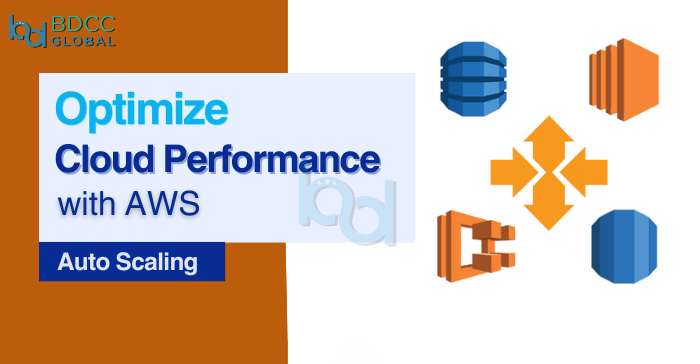
Managing sudden traffic spikes is a critical challenge for modern applications. Overprovisioning resources raises expenses, whereas under provisioning causes performance deterioration and downtime. AWS Auto Scaling tackles this issue by dynamically modifying resources in response to real-time demand, resulting in optimal performance and cost effectiveness.
This tutorial explains how AWS consultants work with Auto Scaling, including its major components and best practices for installation.
Also read about: AWS AI and IoT solutions.
Understanding AWS Auto Scaling
AWS Auto Scaling is a cloud-native technology that automatically increases the amount of computing resources (such as EC2 instances, containers, or databases) based on demand. It integrates with Amazon EC2, ECS, DynamoDB, Aurora, and other AWS services to maintain high availability while optimizing costs.
How It Works
- Monitors Performance Metrics – AWS Auto Scaling continuously tracks CPU utilization, request rates, and other parameters.
- Triggers Scaling Events – Based on predefined policies, it adds or removes resources as needed.
- Distributes Load Easily – Uses Elastic Load Balancing (ELB) to spread traffic among available units.
Key Components of AWS Auto Scaling
-
Auto Scaling Groups (ASGs)
An Auto Scaling Group (ASG) is a logical collection of EC2 instances that scale together. Each ASG defines:
- Minimum capacity – The lowest number of instances running at any time.
- Desired capacity – The default number of instances needed under normal conditions.
- Maximum capacity – The highest number of instances allowed during peak loads.
-
Scaling Policies
Scaling policies determine how AWS Auto Scaling responds to changes in demand. Common types include:
- Target Tracking Scaling – Adjusts capacity to maintain a predefined metric, such as keeping CPU utilization at 50%.
- Step Scaling – Adds or removes a fixed number of instances based on metric thresholds.
- Scheduled Scaling – Increases or decreases capacity at fixed times (e.g., scale up at 9 AM, scale down at 9 PM).
-
Elastic Load Balancer (ELB)
ELB automatically distributes incoming requests across all active instances in an ASG, preventing overload on any single instance.
-
CloudWatch Monitoring
Amazon CloudWatch provides real-time metrics that trigger scaling actions. Example metrics include:
- CPUUtilization – Monitors CPU usage of instances.
- RequestCountPerTarget – Tracks the number of requests per instance.
- NetworkIn/NetworkOut – Measures incoming and outgoing network traffic.
Configuring AWS Auto Scaling for Optimal Performance
Defining an Auto Scaling Group
To configure AWS Auto Scaling, the first step is to create an Auto Scaling Group through the AWS Management Console. This includes choosing a launch template that defines the instance’s sort, Amazon Machine Image (AMI), security categories, and other settings. The ASG is then configured with minimum, desired, and maximum instance counts to define how the system scales under different conditions.
Setting Up a Scaling Policy
Once the ASG is created, administrators need to define scaling policies that align with application requirements. Target tracking scaling is ideal for applications with fluctuating workloads, as it automatically adjusts capacity to maintain a predefined metric. Scheduled scaling is useful when demand follows a predictable pattern, such as increased traffic during business hours. Step scaling is beneficial when workloads vary significantly, as it allows administrators to define specific thresholds for scaling actions.
Integrating CloudWatch Alarms for Automation
CloudWatch alarms enable AWS Auto Scaling to respond dynamically to real-time traffic conditions. Administrators can configure alarms that monitor CPU utilization, request rates, and other key metrics. For example, an alarm can be set to trigger additional instances when CPU utilization crosses 70%, ensuring that the system scales proactively to meet demand. Another alarm can trigger the removal of instances when CPU utilization falls below 30%, optimizing cost efficiency.
Testing Auto Scaling Configuration with Load Simulation
Before deploying an Auto Scaling setup in a production environment, it is essential to validate its performance under simulated traffic conditions. Load testing tools such as AWS Distributed Load Testing or Apache JMeter can generate high traffic volumes to evaluate how the system scales in response. These tests help fine-tune scaling thresholds, ensuring that resources are allocated efficiently during real-world traffic spikes.
Best Practices for Implementing AWS Auto Scaling
Leveraging Predictive Scaling for Proactive Management
Predictive scaling is an advanced AWS feature that uses machine learning to forecast future traffic trends and adjust resources in advance. Unlike reactive scaling, which responds after traffic surges, predictive scaling enables the system to scale before demand increases, improving application responsiveness and reducing latency.
Optimizing Instance Selection for Cost Efficiency
Choosing the right instance types is critical for cost optimization. Spot instances provide a cost-effective solution for handling non-critical workloads, while a combination of on-demand and reserved instances ensures a balance between flexibility and savings. Administrators should evaluate workload requirements to determine the perfect way to combine instance units.
Using Lifecycle Hooks for Better Instance Management
Lifecycle hooks allow administrators to execute custom scripts before instances are added or removed from an Auto Scaling Group. This feature is useful for performing essential tasks such as preserving session data, running startup scripts, or warming up application caches before an instance becomes active. Similarly, lifecycle hooks can ensure that instances complete critical shutdown operations before being terminated.
Implementing Cooldown Periods to Prevent Excessive Scaling
Cooldown periods help prevent unnecessary scaling events by ensuring that AWS Auto Scaling waits for a specified time before making further adjustments. This avoids rapid fluctuations in instance count, which can lead to unstable performance and higher costs. Setting appropriate cooldown values based on actual scaling behavior improves overall system efficiency.
Regular Monitoring and Optimization of Scaling Policies
To maintain an effective Auto Scaling strategy, administrators should regularly analyze CloudWatch metrics and adjust scaling policies as needed. Reviewing historical traffic patterns helps fine-tune scaling thresholds, ensuring that the system remains optimized for both performance and cost. Continuous monitoring allows organizations to identify inefficiencies and make data-driven improvements to their Auto Scaling configurations.
Conclusion
AWS Auto Scaling provides an intelligent, automated way to handle traffic spikes while maintaining cost efficiency. By dynamically adjusting compute resources in response to demand, it ensures that applications remain available and performant without manual intervention. Properly configuring Auto Scaling Groups, defining effective scaling policies, and integrating monitoring tools like CloudWatch are essential for achieving a well-balanced, optimized cloud infrastructure.
Contact us to start using AWS Auto Scaling effectively right away.

